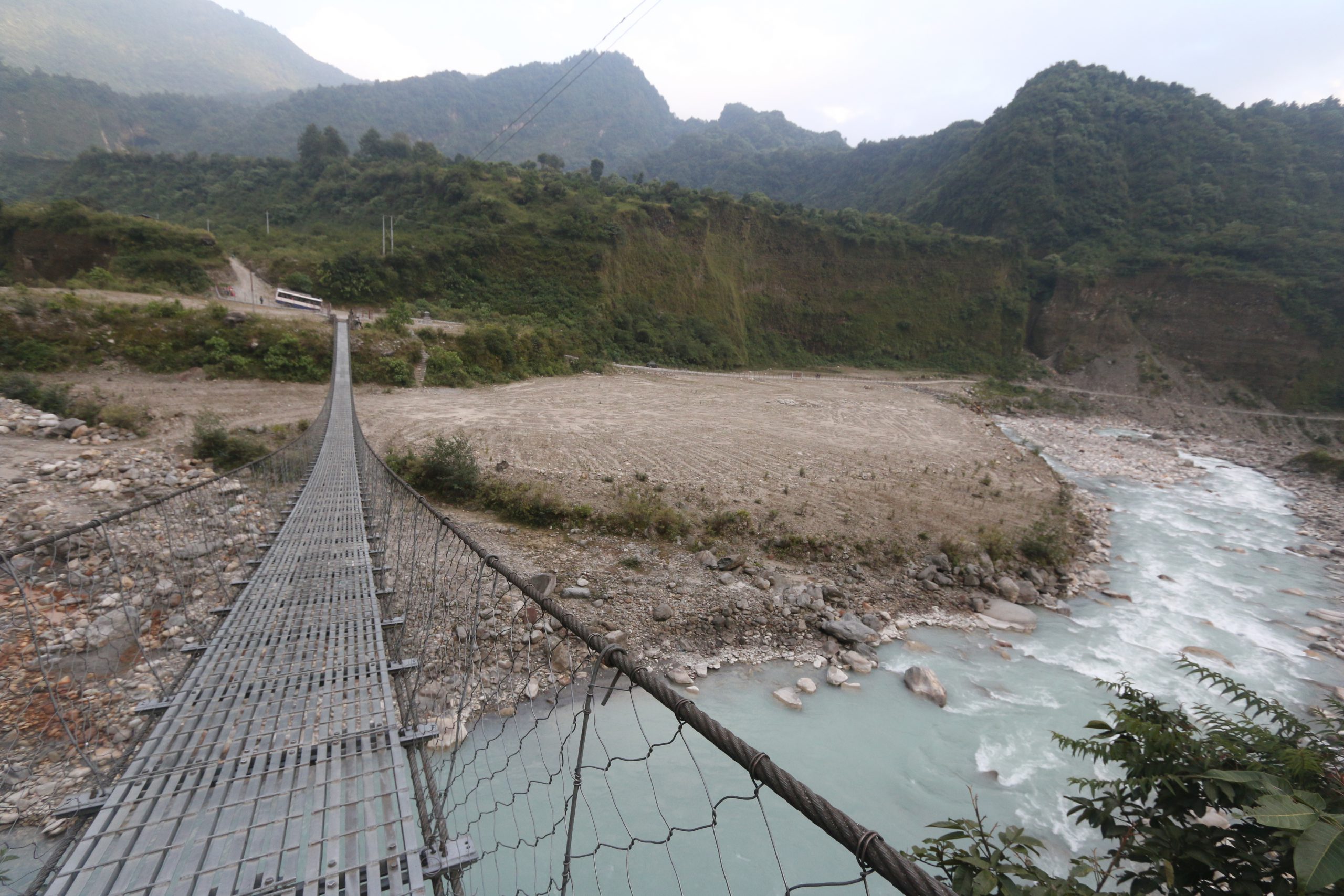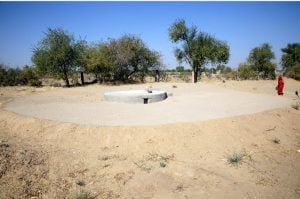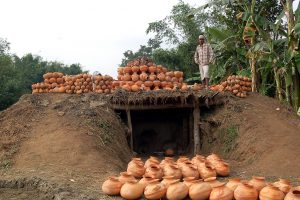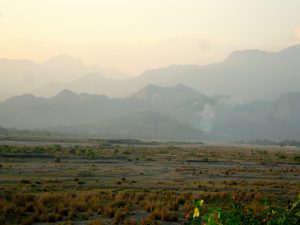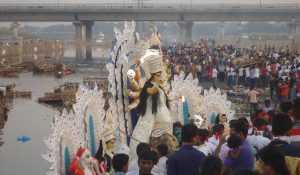The auspicious festival of Dashain, Nepal’s biggest and most anticipated holiday, failed to bring joy to Santosh Tamraka from Bhurjung village in Sardikhola, western Nepal. His father was not there to give his blessing; he was killed in a massive flash flood on May 5, 2012 in the Seti River, which originates in the Annapurna mountain range.
His father and sister-in-law were at their hotel in Tatopani, a popular tourist retreat north of Pokhara, when a cliff of water roared past, washing away everything in its path. Tamrakar is still afraid to visit the flood hit area, only four kilometers from his village.
“Three years have passed and I have not once set my foot on the river bed where we used to run a hotel. The river took away my family,” said Tamrakar. He has lived in the area for over three decades but has never experienced such a devastating flood.
Another local Dhan Bahadur Tamang lost his wife and six year old son, who were washed away while they were bathing near the river. Tamang survived by climbing to a height. Now he is married to a second wife but he claims his heart is always with his first love. “I wish I had been there to save them,” said Tamang.

Sudden flood, lasting consequences
It was a bright sunny morning when the massive flash flood rolled down the Seti River and inundated Sardikhola and Machhapuchhre village development committees in Kaski district, killing more than 70 people and destroying property worth millions of rupees.
Most people killed were locals or visitors bathing in the river or labourers working in stone quarries on the river banks. There used to be seven or eight hotels in the area, but now it lies abandoned.
The government distributed compensation of Rs 125,000 (US$1,180) to each of the flood victims families. But nothing has been done to redevelop the area over the past three years.
“No one in the area is willing to reconstruct hotels for fear that the flooding might happen again,” said Tamrakar. “Moreover, nothing has been done to develop the area and make us feel secure,” he added.
A thick layer of debris 15 metres deep has settled on the riverbed near Tatopani, turning the area into a flat plain. Authorities have built a two metre high fence to keep people and livestock out.
Unravelling the cause
The cause of the flash flood was a mystery at first; it happened on a clear day before the monsoon season. Initially it was thought a glacier lake outburst may have triggered the flash flood. Now it is believed an avalanche on the flanks of the Annapurna mountain was responsible.
An air pilot Captain Maximov of Avia Club Nepal observed a thick dark cloud emerging below the Annapurna mountains and captured it on a video camera mounted on the wing of his aircraft. Realising the danger, he radioed a warning to officials at Pokhara airport. His quick response potentially saved hundreds of lives, but people in Tatopani received no warning.
Subsequent research by the government’s Department of Water Induced Disaster Prevention (DWIDP) confirmed the flash flood was triggered by avalanches in the southern slopes of Annapurna IV. The avalanche moved 10 kilometres down the valley destroying everything in its way. The impact was so great it caused an earthquake of 3.8 on the Richter scale and felt as far away as Lhasa.
“A huge chunk of mass descended from 6,850 metres to 4,500 metres almost vertically into the gorge of the Seti River. Consequently, the river gushed down washing away everything along the way,” said Dwivedi, a senior geologist at DWIDP and co-author of the research paper published in the Journal of Nepal Geological Society.
Samjwal Bajracharya, a remote sensing specialist at the Kathmandu based International Centre for Integrated Mountain Development (ICIMOD), believes the mystery of the flood has not been fully unravelled. He believes the avalanche disturbed the remains of a glacier lake that had burst over 400 years ago, releasing impounded water into the river.
No early warning system
There was no flood early warning system in Kaski district at the time of the flood – this was installed only a year after the tragedy. If such a system had been in place, many more lives would have been saved.
The government’s Department of Hydrology and Meteorology (DHM) has now set up river and rainfall monitoring stations 16 kilometres from Pokhara city in the Jaymirebari and Ramghat, supported by the NGO Practical Action, USAID, the UK government and other local partners.
“The stations have been installed in both upstream and downstream sections of the river and the river activity is monitored from Kathmandu. Until now, no such unusual or agitating river flow has been recorded,” said Binod Parajuli, hydrologist at DHM.

Earthquake hazards
The whole hilly region around Pokhara, Nepal’s second largest city and a popular hub for treking hub for tourists, is vulnerable to such disasters, warned Sanjay Devkota, a geo-hazard expert at Pulchowk Engineering College in Kathmandu. Moreover, Devkota believes that shocks from the recent massive earthquake in April will have caused unseen damage, leaving the area even more vulnerable.
“Unlike Kathmandu and other districts, Kaski did not experience any major impact [from the quake] but it must have loosened rocks and created fissures in the hills,” said Devkota.
Krishna Regmi, Assistant Chief District Officer of Kaski district, admitted the government has not been concerned about rebuilding the areas left deserted after the floods.
“Our work involved forwarding immediate help and distributing the compensation to flood victims. As for developing the area, other government bodies like the National Planning Commission should have come up with better strategies. It is a sad situation but nothing has been implemented yet,” said Regmi.
